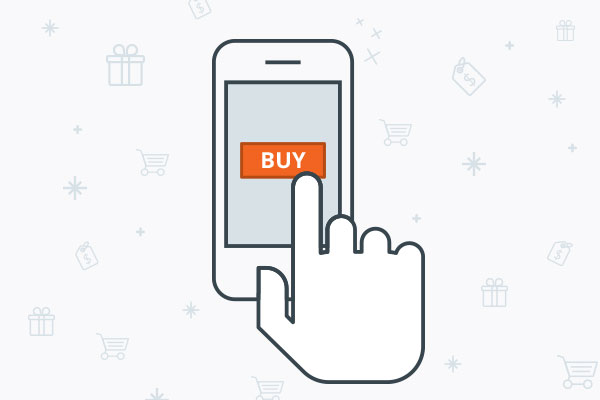 After a monopoly in the 1-click sphere for 20 years, Amazon’s technology patent is expiring this year. Amazon has been a steadfast trailblazer in the advent of frictionless shopping. This is a retail giant in tune with what consumers want: speed and convenience. They’ve rolled out revolutionary new ways to shop such as Amazon Go, Amazon Dash (they just launched digital versions of their Dash Buttons for Prime members), and of course Amazon 1-click. Amazon’s 1-click function has helped the retail behemoth reduce purchasing friction, increase recurring sales, and create a more customer-centric experience.
After a monopoly in the 1-click sphere for 20 years, Amazon’s technology patent is expiring this year. Amazon has been a steadfast trailblazer in the advent of frictionless shopping. This is a retail giant in tune with what consumers want: speed and convenience. They’ve rolled out revolutionary new ways to shop such as Amazon Go, Amazon Dash (they just launched digital versions of their Dash Buttons for Prime members), and of course Amazon 1-click. Amazon’s 1-click function has helped the retail behemoth reduce purchasing friction, increase recurring sales, and create a more customer-centric experience.
What is it?
As the name suggests, it essentially allows customers to purchase with just one click. Customers securely store their payment information during their first transaction and then pay for their subsequent purchases with a single click. In 1997, Amazon filed their 1-click patent and in 1999, it was granted, meaning retailers who want to implement the convenient buying method have to pay Amazon. This is what Apple did; they licensed 1-click from Amazon in order to use their own version of the technology online and in their app.
Amazon’s 1-click buying has contributed to the widespread adoption of frictionless payment processing. While Amazon’s 1-click buying has enjoyed popularity and success, others have replicated the same type of frictionless buying in other forms such as buy buttons and mobile wallets.
What does the patent expiration mean?
Amazon will no longer have exclusive rights to the 1-click technology as their patent is expiring this year. This means that other eCommerce retailers will take advantage and adopt the technology, prompting an influx of 1-click buying to come in the year ahead.
What’s next?
As a proliferation of 1-click buying is imminent, the World Wide Web Consortium (W3C) is looking even further and working on making the 1-click ordering concept a standard across the internet. Last year, the W3C brought together 40 global brands, including the likes of Microsoft, Google, and Facebook, to improve the online buying experience and work on creating “a new global standard for online payments”.
The standard aims to allow customers to fill out their credit card information securely on any web browser and make subsequent purchases on any site with just one click. In some of its newer Chrome browser versions and on participating eCommerce sites, Google has introduced a drop-down menu of stored shipping addresses and credit cards for customers to choose from. Google chose to verify the transaction by getting customers to enter their credit card three-digit security number and purchase with just one click, but other verification processes may utilize fingerprint ID. This initiative aims to unify the online shopping process into an omnichannel experience as it’s inclusive of all card brands and payment apps.
Amazon’s 1-click function has made great strides in frictionless payment processing and provides a launching pad of sorts for even more innovation for the future of buying.